 Carter Horsley
Carter HorsleyDec 23, 2011
Carter's Review
One of the handsomest mid-rise residential buildings at Battery Park City is One Rector Park at 333 Rector Place on the northwest corner at South End Avenue.
It was designed by Charles Moore, the winner in 1991 of the Gold Medal of the American Institute of Architects, and Kaiser, Rothzeid, Thomson & Bee. It was built by Rockrose as a rental in 1986 when it was known as River Rose.
The 15-story building was converted to a condominium in 2011 and its interiors were then designed by Costas Kondylis.
It has 174 apartments.
Bottom Line
One of the country’s most famous Post-Modern designs, this rather bold project faces one of the loveliest parks at Battery Park City. It was designed by Charles Moore, a former dean of the Yale University School of Architecture, whose Piazza d’Italia in New Orleans became an instant Post-Modern landmark in New Orleans in 1978.
Description
Originally planned on two separate building sites, this rather sophisticated building has a split personality divided between its mid-block portion of strongly accented, protruding masonry balconies and its corner section, which has a large, mid-building horse-shoe decorative element seeming to cascade three-stories on two of the building's façades. The buildings in both sections, however, are united in the handsome white-stone base.
The red-brick building has a lobby redesigned by Rick Livingston of PERIOD LLC with Baccarat crystal chandeliers, mahogany walls, a saltwater fish tank and photographs by Jeffrey Rothstein.
Amenities
The building has a double-height, paneled lobby with cold storage, a 50-car garage, Bar and Books, the residents’ lounge, Little Door, a children’s playroom with circular ceiling lights, a business center, a windowed fitness center, a 24-hour attended deck and Abigail Michaels concierge services. It also has about 20,000 square feet of retail space.
The building is pet friendly.
Apartments
Apartments have two packages of finishes with a different color palette for kitchens, bathrooms and wood floors.
Each apartment has a Bosch stainless steel oven, range and stackable washer and vent-less dryer, a Liebherr stainless steel refrigerator and a Fischer & Paykel stainless steel two-drawer dishwasher, an iPod docking station with speakers and a wall-mounted television in the master bedroom.
Apartment 404 is a corner four-bedroom unit with a 32-foot-long, angled living room with a 14-foot-long enclosed kitchen and a 20-foot-long angled master bedroom.
Apartment 1104 is a corner, one-bedroom unit with a 21-foot-long living room with an open kitchen that leads to an angled balcony and a 13-foot-long den.
Apartment 1009 is a two-bedroom unit that has a 22-foot-long living room with an open kitchen and a balcony.
Apartment 1103 is a three-bedroom unit with a 25-foot-long, angled living room with a six-sided balcony and a 13-foot-long study and a pass-through kitchen. The master bedroom also has a small balcony and the two other small bedrooms have bay windows.
Apartment 1108 is a three-bedroom unit with a 30-foot-living room with an open kitchen with an island and a 7-foot-study. The living room has two angled entrances to balconies that it shares with flanking bedrooms that have angled windows.
History
In their great book, “New York 2000, Architecture and Urbanism Between the Bicentennial and the Millennium,” Robert A. M. Stern, David Fishman and Jacob Tilove wrote that “the individual architects employed at Rector Place…were able to induce considerable individuality into the buildings, and Rector Place emerged as something truly remarkable in postwar urban development: a coherent enclave with its own distinct and identifiable character, comparable to some of the defining neighborhoods of the interwar years.”
“The first piece of the district to be completed was Rector park, designed by Richard Webel of Innocenti-Webel with Vollmer Associates, opening in spring 1985,” they continued, adding that “The park, two one-acre lots encircled by Rector Street and bisected by South End Avenue, was organized around “the controlled layering of an enclosing landscape – lawn, ground cover, hedge, small tree, canopy tree, and street fret, fence, wall and curb.” It features pink granite posts supporting iron railings and bluestone walkways as well as walkways of red brick in a herringbone patter. In the opinion of Paul Goldberger, the designers achieved their goal: “Rector Park...is the best thing of its kind in New York since Gramercy Park.”
“The first residential buildings to be completed according to the new Battery Park City master plan,” they noted, “were on the north side of Rector Park, beginning with Charles Moore and Rothzeid, Kaiserman, Thomson & Bee’s River Rose (1986), which Carter Wiseman called “a fifteen-story essay on the Venetian palazzo via Park Avenue.” Though it was hardly a major work of its gifted design architect, the subtlely modeled façade, with hits angled indentations, projecting frames and balconies, richly modeled ban courses, and stone corner tower, clearly demonstrated that neither the guidelines nor the demands of a market-drive developer, strict though they were, could totally suppress real talent. But some critics felt the architects tried too hard. Benjamin Forgey, architecture critic for the Washington Post, deemed it a “flop,” calling it “as close to a cacophony of colors, materials, cornice, belt courses, protuberances, and tops as could possibly have been damaged under the circumstances - an effervescent but not a pleasant sight.”
Given Manhattan’s infatuation with chaos, however, such a cacophony is by no means negative and this development is quite powerful in its form and detailing and has very good layouts.
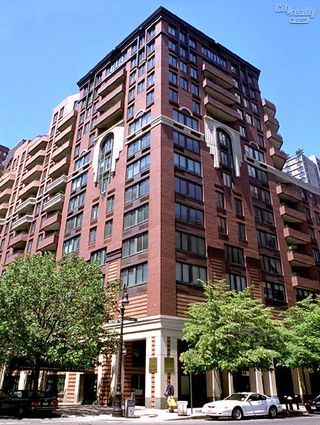
- Condo built in 1986
- Converted in 2011
- 3 apartments currently for sale ($1.15M to $2.995M)
- Located in Battery Park City
- 232 total apartments 232 total apartments
- 10 recent sales ($698.5K to $2.6M)
- Doorman
- Pets Allowed
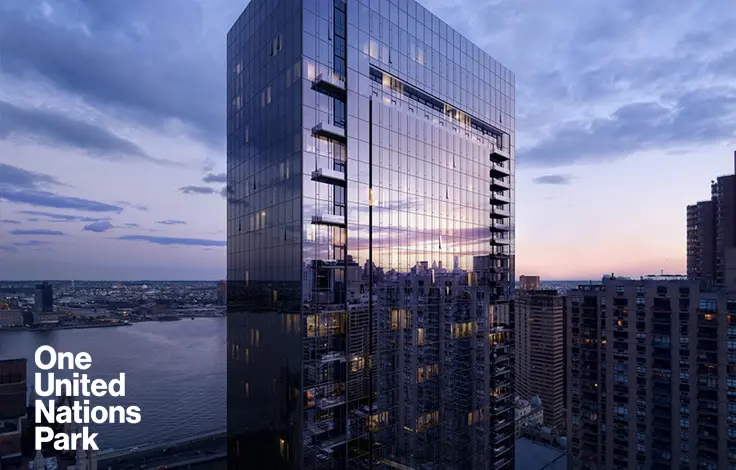
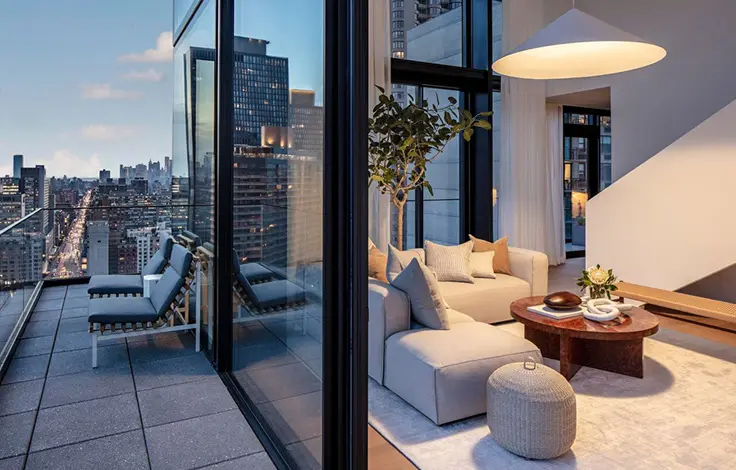
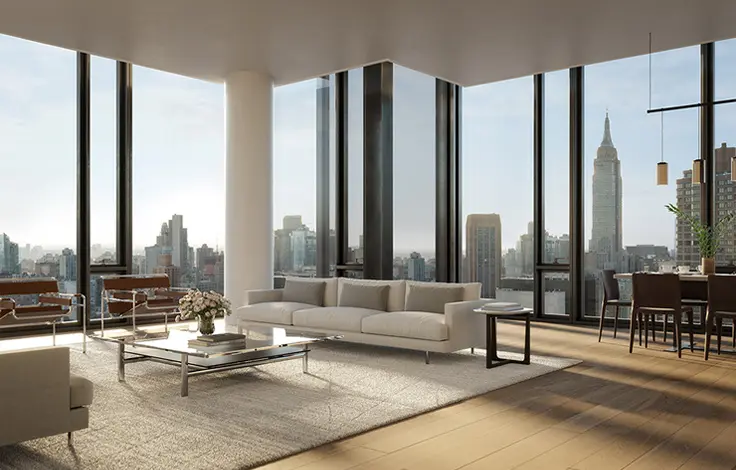
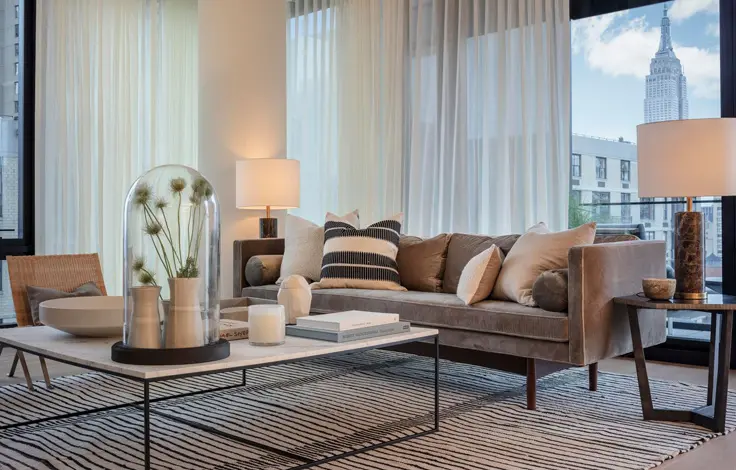
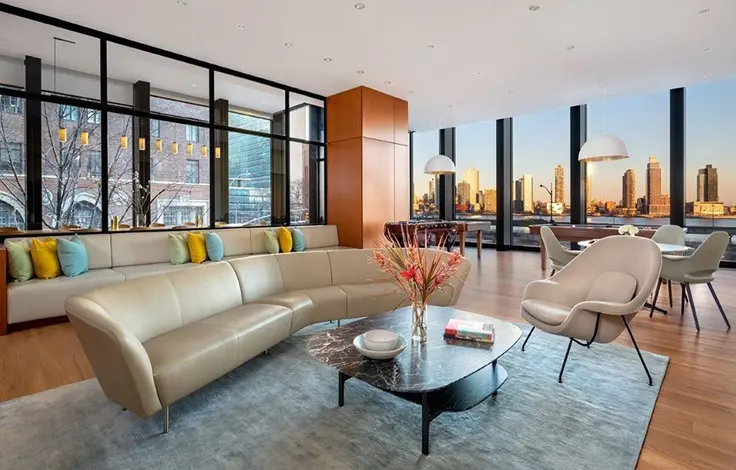
 6sqft delivers the latest on real estate, architecture, and design, straight from New York City.
6sqft delivers the latest on real estate, architecture, and design, straight from New York City.
